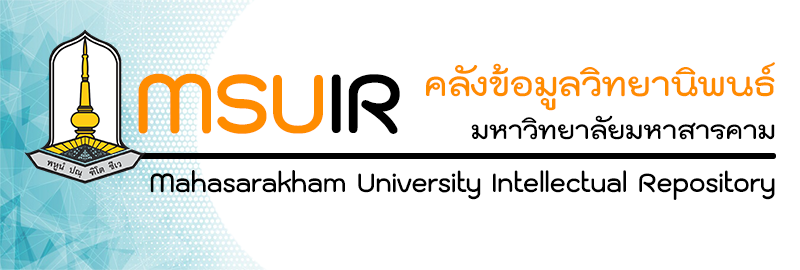Please use this identifier to cite or link to this item:
http://202.28.34.124/dspace/handle123456789/2675Full metadata record
| DC Field | Value | Language |
|---|---|---|
| dc.contributor | Guifen Lyu | en |
| dc.contributor | Guifen Lyu | th |
| dc.contributor.advisor | Niwat Angkawisittpan | en |
| dc.contributor.advisor | นิวัตร์ อังควิศิษฐพันธ์ | th |
| dc.contributor.other | Mahasarakham University | en |
| dc.date.accessioned | 2025-05-07T11:04:01Z | - |
| dc.date.available | 2025-05-07T11:04:01Z | - |
| dc.date.created | 2024 | |
| dc.date.issued | 20/2/2024 | |
| dc.identifier.uri | http://202.28.34.124/dspace/handle123456789/2675 | - |
| dc.description.abstract | Urban vitality is a crucial factor in shaping the development of cities, with the built environment playing a pivotal role in influencing this vitality. This research focuses on the city of Yinchuan, utilizing the Baidu heat map as a tool to assess urban vitality. Independent variables are drawn from the built environment, and the study employs various models, including Ordinary Least Squares (OLS), Moran's I, Geographically Weighted Regression (GWR), and Gradient Boosting Decision Tree (GBDT), to explore the intricate relationship between urban vitality and the built environment.The analysis distinguishes between weekdays and weekends, providing a nuanced understanding of temporal dynamics. The findings reveal several key insights:(1) The study underscores that the built environment in Yinchuan significantly impacts urban vitality on both weekdays and weekends. Variables such as Landscape, Hotel, Shopping, Openness, Greenness, Imageability, Road, Bus station, TPBt-500, NQPTA-500, and TPBt-1200 are identified as key influencers.(2) Positive spatial autocorrelation is observed between the built environment and urban vitality on both weekdays and weekends.(3)GWR model analysis reveals distinct spatial distribution characteristics for urban vitality during weekdays and weekends.(4)GBDT model analysis highlights different importance rankings for variables influencing urban vitality on weekdays and weekends. The research offers tailored strategies for enhancing urban vitality in different areas and time periods, serving as a crucial reference for urban planning and sustainable development in Yinchuan City. | en |
| dc.description.abstract | - | th |
| dc.language.iso | en | |
| dc.publisher | Mahasarakham University | |
| dc.rights | Mahasarakham University | |
| dc.subject | สภาพแวดล้อมที่ก่อสร้าง, ความมีชีวิตในเมือง, GWR, GBDT, Big data | th |
| dc.subject | Built environment Urban vitality GWR GBDT,Big data | en |
| dc.subject.classification | Computer Science | en |
| dc.subject.classification | Construction | en |
| dc.subject.classification | Architecture and town planning | en |
| dc.title | Artificial Intelligence Implementation in Rural Planning and Design | en |
| dc.title | Artificial Intelligence Implementation in Rural Planning and Design | th |
| dc.type | Thesis | en |
| dc.type | วิทยานิพนธ์ | th |
| dc.contributor.coadvisor | Niwat Angkawisittpan | en |
| dc.contributor.coadvisor | นิวัตร์ อังควิศิษฐพันธ์ | th |
| dc.contributor.emailadvisor | niwat.a@msu.ac.th | |
| dc.contributor.emailcoadvisor | niwat.a@msu.ac.th | |
| dc.description.degreename | Doctor of Philosophy (Ph.D.) | en |
| dc.description.degreename | ปรัชญาดุษฎีบัณฑิต (ปร.ด.) | th |
| dc.description.degreelevel | Doctoral Degree | en |
| dc.description.degreelevel | ปริญญาเอก | th |
| dc.description.degreediscipline | สำนักวิชาวิศวกรรมศาสตร์ | en |
| dc.description.degreediscipline | สำนักวิชาวิศวกรรมศาสตร์ | th |
| Appears in Collections: | The Faculty of Engineering | |
Files in This Item:
| File | Description | Size | Format | |
|---|---|---|---|---|
| 64010363011.pdf | 7.63 MB | Adobe PDF | View/Open |
Items in DSpace are protected by copyright, with all rights reserved, unless otherwise indicated.

